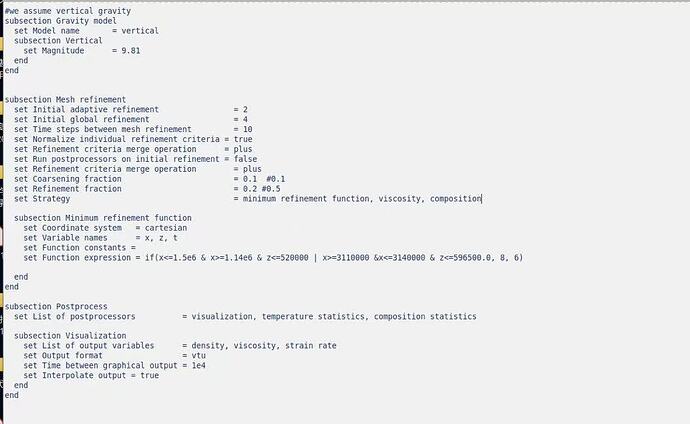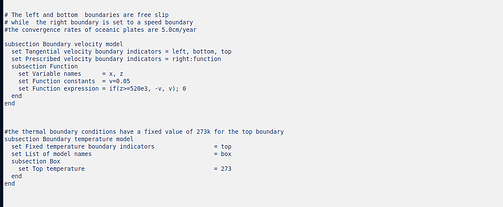Hello every one,
I hope this message finds you well.
My name is Vladmir, and I am currently working on a project using ASPECT to model subduction initiation triggered by the collision of two continents. I have been reviewing the ASPECT cookbooks and benchmarks for guidance on building my input file, but I’ve encountered a few challenges along the way and would appreciate any insights you might have.
My model includes 8 compositional fields, and the oceanic lithospheric mantle’s temperature is governed by half-space cooling. The viscosity range I’m working with spans from 1e20 to 5e23 . I’m using a viscoplastic rheology combined with a composite viscous flow law. However, the model solving fails after the first time step when the composite law is used.
When I attempt to run the model with only dislocation or diffusion creep, it begins to run, but I encounter an error later in the simulation indicating that the iterative solver is not converging.
Additionally, I’ve noticed that the initial time step starts high but drops significantly after a short time, eventually reaching values close to one year. This presents a problem given that the end time for my simulation is set to 22 million years.
I would greatly appreciate it if someone could assist me in handling these issues. Any help or suggestions would be invaluable.
Thank you for your time and assistance.
Best regards,
Vladmir

































